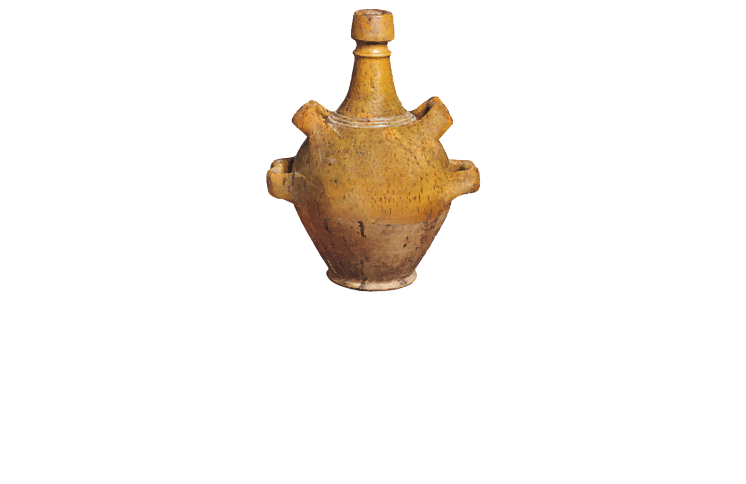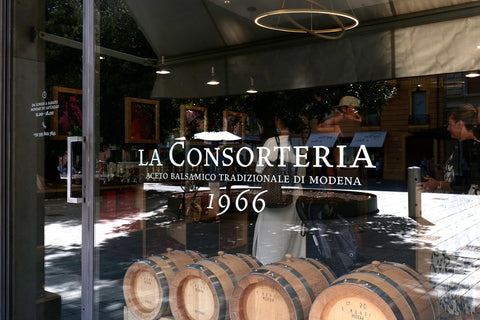What you need to know
- Denominations: PDO and PGI
- Traditional Balsamic Vinegar of Modena PDO (Aceto Balsamico Tradizionale di Modena DOP)
- Balsamic Vinegar of Modena PGI (Aceto Balsamico di Modena IGP)
———
Denominations: PDO and PGI
PDO (Protected Designation of Origin)
A Protected Designation of Origin is a name which identifies a product: originating in a specific place, region or, in exceptional cases, a country; whose quality or characteristics are essentially or exclusively due to a particular geographical environment with its inherent natural and human factors; the production steps of which all take place in the defined geographical area. In Italy, there are currently 578 Protected Designations of Origin, specifically 170 for agri-food products and 408 for wine and spirits.
PGI (Protected Geographical Indication)
A Protected Geographical Indication is a name which identifies a product: originating in a specific place, region or Country; whose given quality, reputation or other characteristic is essentially attributable to its geographical origin; at least one of the production steps of which take place in the defined geographical area. In Italy, there are currently 257 Protected Geographical Indications, specifically 139 agri-food products and 118 wine and spirits.
———
Traditional Balsamic Vinegar of Modena PDO
Traditional Balsamic Vinegar of Modena PDO is balsamic vinegar obtained from the must of typical grapes from the Province of Modena. It is aged for at least 12 years and at least 25 years for the Extravecchio (Extra Aged) typology.
Production Area
The production area of Traditional Balsamic Vinegar of Modena PDO is within the entire territory of the Province of Modena, in the Emilia-Romagna region.
Production Method
Traditional Balsamic Vinegar of Modena PDO is obtained exclusively from must originating from grapes belonging to the Lambrusco, Ancellotta, Trebbiano, Sauvignon, Sgavetta, Berzemino and Occhio di Gatta grape varieties, as well as other PDO varieties registered for the Province of Modena. After having been pressed and before cooking, the fresh musts can be decanted and refrigerated to prevent the watery parts from freezing. Cooking must take place outdoors, over a direct flame at a temperature of around 80°C. The product is then left to age for 12 years: the product is put in a series of small barrels, each made from a different kind of wood, which are placed in order of volume creating what is known as the “batch”. Each year, using a particular decanting method, the contents of the smaller barrels are transferred into the larger ones.
Appearance and Flavour
Traditional Balsamic Vinegar of Modena PDO is characterized by its dark brown color, which is deep and lustrous, its fragrant, penetrating and persistent aroma and its pleasant and harmonious acidity. The flavor is well-balanced between sweet and sour.
History
The history of balsamic vinegar dates back to the times of the Duchy of Este, although even during the times of the Roman Empire it was customary to cook must for transforming it into an edible condiment. Production of this condiment developed in a restricted area between Modena and Reggio Emilia, where these so-called “special” vinegars have been produced for centuries. The “Balsamic” qualification was attributed later on, for the medicinal organoleptic properties of this type of vinegar. The writings of Count Giorgio Gallesio constitute the oldest “technical” document (1839) about this product, in which he describes the production techniques for Modena vinegar; while in 1862, the lawyer Francesco Aggazzotti presented a sample of 150 year old vinegar in Florence, describing the production method of balsamic vinegar and how only cooked musts could be used.
Gastronomy
Traditional Balsamic Vinegar of Modena PDO should be stored in a well-sealed glass recipient at room temperature. Thanks to its versatility, this product can be used in the preparation of numerous recipes, from the simplest to the most elaborate. It comes into its own when used with fresh and steamed vegetables, risotto, meat and fish dishes, although it is also excellent when served with flakes of Parmigiano Reggiano, ice-cream and fruit, especially strawberries. In order to maintain its unmistakable aroma and flavor, it should only be added after the food has been cooked.
Marketing
The product is marketed in the following typologies: Traditional Balsamic Vinegar of Modena PDO (if the product is aged at least 12 years) and Traditional Balsamic Vinegar of Modena PDO Extra Aged (if the product is aged at least 25 years). Packaging is obligatory and consists of a 100 ml bottle designed by the designer Giorgetto Giugiaro.
Distinctive Features
Traditional Balsamic Vinegar of Modena PDO is the result of the pedoclimatic characteristics of the production area and the variety of grapes cultivated in the Province of Modena, combined with the art of cooking the must and the annual decanting of the vinegar from barrel to barrel. Thanks to the specific microclimate, the wood used, the procedures for cooking the must, the old age of the barrels and the producers’ ‘know how’, each vinegar works produces traditional balsamic vinegar with particular characteristics and fragrances.
Texts taken from QualiGeo - Fondazione QualiVita
———
Balsamic Vinegar of Modena PGI
Balsamic Vinegar of Modena PGI is balsamic vinegar obtained from grape must and wine vinegar refined for various periods of time in recipients made from precious wood. It is produced in two typologies: Balsamic Vinegar of Modena PGI and Balsamic Vinegar of Modena PGI Invecchiato (Aged).
Production Area
The production area of Balsamic Vinegar of Modena PGI is within the provinces of Modena and Reggio Emilia, in the Emilia Romagna region.
Production Method
Balsamic Vinegar of Modena PGI is obtained from the partially fermented, cooked and/or concentrated grape must of the Lambrusco, Sangiovese, Trebbiano, Albana, Ancellotta, Fortana and Montuni grape varieties. Wine vinegar (minimum 10%) and aged vinegar (minimum 10 years) are added to the must, which together must be at least 20% of the total quantity of the product before processing. Balsamic Vinegar of Modena PGI must be produced with the traditional method of acidification using selected bacterial colonies, or slow surface acidification, or slow surface acidification with wood shavings, followed by aging. Whichever method is used, acidification and the aging process take place in wooden barrels made from, for example, oak, especially durmast, chestnut, mulberry and juniper, for at least 60 days, and at least three years for the ‘aged’ product.
Appearance and Flavour
Balsamic Vinegar of Modena PGI has a delicate and persistent aroma, with an agreeable and harmonious sourness. It is deep brown in color and its smell is slightly acetic, persistent and with possible woody hints. The flavor is well balanced between sweet and sour.
History
The origins of Balsamic Vinegar of Modena PGI can be traced back to the ancient Romans, the first population to cook grape must in order to conserve it and use it as an invigorating drink, or to flavor and sweeten food. A volume dated 1556, entitled "La grassa", describes various types of vinegar and different ways to use them, among which there is a variety that seems to correspond with today’s “balsamic” vinegar. The development of the tradition of balsamic vinegar is given to the transferral of the House of Este from Ferrara to Modena in 1598. However, the adjective “balsamic” only appeared for the first time in 1747, in the Dukes of Este’s cellar records. Over the centuries, it was given the name balsamic due to its particular therapeutic benefits. In the 19th century, Balsamic Vinegar of Modena started to be appreciated internationally: it was in fact the protagonist of the most important exhibitions of the time.
Gastronomy
Balsamic Vinegar of Modena PGI should be conserved in a glass container, which must be well-sealed and kept away from substances that release particularly strong odors. The extreme versatility of this product makes it suitable for every type of dish. Thanks to its fragrant aftertaste and its aromatic sourness, it is perfect with vegetables, both raw and boiled, but also with all types of meat, fish, desserts and ice-cream. It is excellent served with mature cheeses.
Marketing
The product is marketed all year round in the following typologies: Balsamic Vinegar of Modena PGI if the refinement lasts less than three years; Aged Balsamic Vinegar of Modena PGI if aged for more than three years. It is marketed in glass, wooden, ceramic or terracotta containers, with a capacity of: 0.250 l; 0.500 l; 0.750 l; 1 l; 2 l; 3 l; 5 l; or in single-dose sachets of plastic or composite materials, with a maximum capacity of 25 ml. Containers with a capacity greater than 2 l and 5 l, made of plastic, are authorized only if the product is intended for professional use.
Distinctive Features
Balsamic Vinegar of Modena PGI is the result of a combination of tradition and skills that over the centuries, closely linked to the territory, have led to the conception and refinement of its recipe. The unusual aromatic hints of the product are due to its aging in barrels made of precious wood.
Texts taken from QualiGeo - Fondazione QualiVita



